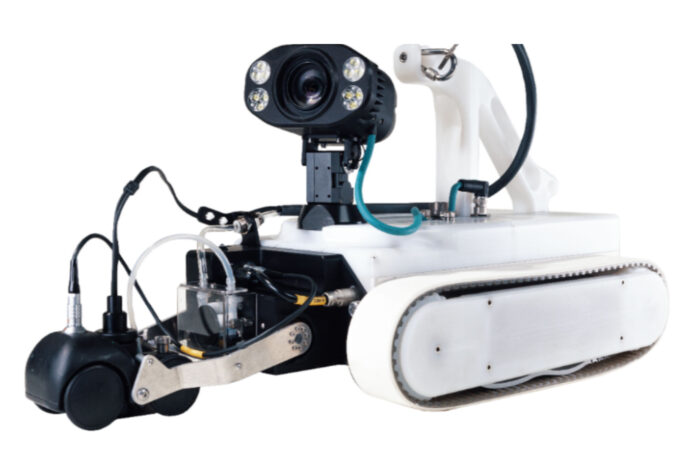Case Study: Combining ultrasonic measurements with visual inspection within a carbon steel tank

NDT inspection tasks are rarely straightforward. Assets are often difficult to access, might be in remote locations, hold toxic materials or have other issues that require a bespoke inspection plan.
Robotic technology is one of the best tools inspection teams have to overcome the many unique challenges they’re presented with. Companies, such as Invert Robotics, are a leading tech business that’s passionate about creating solutions for even the most complex of inspection tasks.
The following looks at one such example and the innovative methods used to overcome the challenge.
The Asset
Invert Robotics was approached to carry out an in-depth NDT task on a carbon steel slurry tank. The asset was over thirty years old and located in Delfzijl in The Netherlands. The customer requested that both UT wall thickness measurements were captured along with a detailed visual inspection.
The Challenges
Inspecting a well-aged asset, such as this one, presented multiple challenges. The team carried out a full appraisal in order to put together the requested combined inspection task and found the following:
- The asset was highly corroded throughout
- The interior was a crowded space. This included an agitator and baffles running up to the roof
- Access to all areas of the tank was limited
The Solution
The biggest challenges to be overcome were the heavily corroded surface, along with gaining adequate access to all areas of the slurry tank. It was decided to use a robotic crawler to carry out both the visual inspection and take the UT wall thickness measurements at the same time.
Full accessibility was achieved by building a custom ramp to allow the robot to traverse the whole of the interior of the tank. Cutting-edge camera technology was attached to this, with a 30x optical zoom function to bring the highest quality of visual inspection. The UT wall thickness testing was carried out by attaching an Olympus 38-DL UT-probe to the front of the robot as a buggy.
By operating the robot remotely, it was possible to take UT wall thickness measurements in multiple areas around the tank, along with high-definition images and video, courtesy of the camera.
The result was an effective, fast inspection that took less than a week from start to finish. Following the inspection, a status report was delivered to the customer who was highly satisfied and impressed at how a robotic crawler could be used to overcome complex inspection assignments.
Contact us to find out more about our range of robots or any of our other inspection products, or request a quote online.
Carry on reading How Robots Are Shaking up NDT Inspections to find out more.
